Join More Than 50,000+ Subscribers and get latest camera news and rumors
NEW CAMERA VIDEOS ON YOUTUBE
|
By admin, on May 13th, 2025
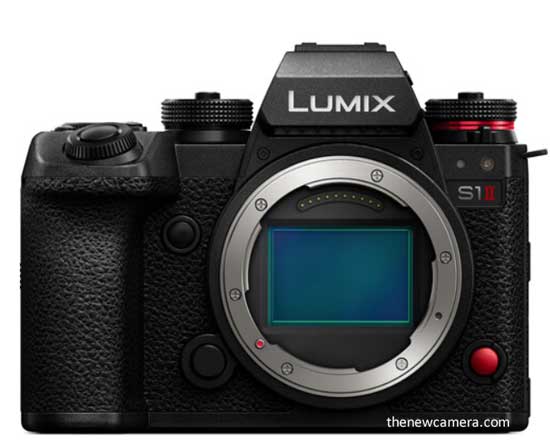
The Panasonic S1 II camera arrives with the same 24 MP partially stacked CMOS sensor we have seen in the Nikon Z6 III camera. The Panasonic S1 II full specification is now available. Let’s have a detailed look at the core specification
LUMIX S1 II Specifications
Image Sensor
- Type: 35mm CMOS
- Effective Pixels: 24.1MP
- Dynamic Range: 15 stops (V-Log DR Boost), 14+ stops (V-Log)
- Dust Removal: Sensor-shift with AR coating
- Image Stabilization: 5-axis (8 stops central, 7 stops peripheral, Dual I.S. 2)
- ISO: Normal (100-51200), V-Log (640-51200), DR Boost (On/Off), Dual Native ISO (Auto/Low/High)
Storage
- Slot 1: CFexpress Type B
- Slot 2: SD UHS-II
Autofocus
- Type: Phase Detection + Contrast
- Focus Points: 779 (Phase) / 315 (Contrast)
- Brightness Range: -6 to 18EV
- Object Detection: People, Animals, Cars, Motorcycles, Trains, Airplanes
Shutter
- Mechanical: 60s – 1/8000s
- Electronic Front Curtain: 60s – 1/2000s
- Electronic: 60s – 1/16000s
- Flash Sync: 1/250s
Continuous Shooting
- Mechanical: Up to 10fps (H+, AFC)
- Electronic: Up to 30fps (SH, AFC), 10fps (H+, AFC)
- Burst Capacity: 200+ RAW (Mechanical), 180 RAW (SH)
Viewfinder
- Type: OLED
- Resolution: 5.76M dots
- Frame Rate: 60/120fps
Monitor
- Size: 3.0″ Free-Angle
- Resolution: 1.84M dots
Video
- Frame Rates:
- 6K 59.94p (LGOP)
- 4K 119.88p (LGOP), 59.94p (ALL-I/ProRes)
- 5.8K 29.97p (ProRes)
- Output: MOV (H.264/H.265/ProRes/ProRes RAW), MP4 (H.264/H.265)
- Log: V-Log, ARRI LogC3 (with DMW-SFU3A)
- Audio: LPCM (24-bit), 32-bit float (XLR2)
Connectivity
- USB: USB-C (10Gbps), 4K 29.97p Streaming
- HDMI: Type A
- Audio Ports: 3.5mm Mic, 3.5mm Headphone
- Wireless: Wi-Fi (5/2.4GHz), Bluetooth 5.0, FHD 59.94p Streaming
- Other: 2.5mm Remote
Battery
- Type: 7.2V, 2200mAh
- Shots: 348 (CFexpress, LVF), 359 (SD, LVF)
- Battery Grip: DMW-BG2 (sold separately)
Physical
- Dimensions: 134.3 x 102.3 x 91.8mm
- Weight: 718g (body), 800g (with battery)
- Build: Dust and water resistant
Panasonic S1 IIE specification here
Follow us on our social pages FACEBOOK | TWITTER | INSTAGRAM, to get LIVE News and Panasonic Rumor
Source Webio E8M
By admin, on May 12th, 2025

We have already published the leaked images of the Panasonic S1E II; now, it’s time for the full specifications.
Panasoinic LUMIX S1IIE (Official Text)
Elevate your storytelling with the new CinemaScope 4K 60p aspect ratio, delivering a cinematic view without any cropping. With the intuitive operation of the S1 series, including the LUMIX S1RII and S1II, the S1IIE enhances creative exploration with ease. Both models feature advanced AF precision and new ‘Urban Sports’ recognition, and 8.0-stop in-body stabilization for steady shooting.
Panasonic LUMIX S1E II Specification
Main Features
- Adopts a 24.2MP sensor that inherits the performance characteristics of the LUMIX SSII
- Realizing high image quality in a variety of shooting condition
- Supports 6K 30p (3:2) open gate video recording
- V-Log allows video recording with a dynamic range of over 14 stops
- Experience blackout-free shooting with the electronic shutter mode “SH/SH PRE” for high-speed continuous shooting at up to 30 frames per second and the extended continuous shooting mode “H+” at approximately 10 frames per second using a mechanical shutter
- 14+ stops of dynamic range V-LOG
- Full frame 6K30p OG, 6K60p 2.4:1, 4K30p 16:9/17:9, 4K60p 2.4:1
- APS-C 3.3K 50p 4:3, 4K60p 16:9/17:9
- S&Q 4K 2.4:1 60fps, FHD 180fps
- 120Hz 5.76 million dot EVF
- 779 points Phase AF
- Dual Native ISO 100/640 5-
- Axis image stabilization 8 stops at center, 7 stops at periphery
- 1/8000s mechanical shutter
- 30fps continuous shooting with electronic shutter, 10fps mechanical shutter
Second-generation S1 series, the LUMIX S1IIE maintains the acclaimed design and ergonomic excellence of the S1II and S1RII, offering potential for creative exploration. It is equipped with a 24.2MP sensor inspired by the characteristics of the LUMIX S5II, ensuring exceptional image quality tailored to various shooting conditions. It incorporates notable features from the S1II, positioning itself as a comprehensive tool for creative projects. Notably, the LUMIX S1IIE introduces a new Cinemascope (2.4:1) video format available in various frame rates, including uncropped 60p. Panasonic anticipates that the LUMIX S1IIE will be the preferred choice for those seeking improvements in ergonomic design and refined engineering.
LUMIX S1IIE
- Cinemascope 4K60p aspect ratio
– Delivers a cinematic view without cropping for improved storytelling
- The S1 series’ intuitive operability makes creative exploration
easy
- Advanced AF precision and new “Urban Sports” recognition
- Equipped with 8.0-stop in-body image stabilization
- Award-winning design and ergonomics on the S1II and S1RII
- Equipped with a 24.2MP sensor inspired by the features of the LUMIX S5II
- Equipped with the outstanding features of the S1II, it is a comprehensive tool for creativity
- Introduces new Cinemascope (2.4:1) video format available in a variety of frame rates including non-cropped 60p
Improved core performance to unlock new creative possibilities
- Real-time recognition redefined:
On-chip phase detection AF improves eye and face detection, and enhances AI-enabled people tracking accuracy.
- Equipped with new AF recognition for “urban sports” –
accurately captures dynamic movements such as breakdancing, skateboarding, and parkour
- 8.0-stop in-body image stabilization (BIS)
- Newly developed No-Crop EIS video distortion correction has been improved
- By using the separately sold software update key DMW-SFU3A, ARRI LogC3 will become available for the first time on the S Series.
- Supports internal recording of 5.8K 30p / C4K 60p Apple ProRes RAW HQ / ProRes RAW to CFexpress Type B cards.
The image sensor appears the same as the S5II’s 24MP CMOS. There may not be any major improvements in image quality or rolling shutter performance, but CFexpress (high bitrate internal recording), improved AF, image stabilization, and video functions are likely to be its strengths.
Follow us on our social pages FACEBOOK | TWITTER | INSTAGRAM, to get LIVE News and Panasonic Rumor
Source Webio E8M
By admin, on May 10th, 2025

According to the latest rumors, the Panasonic S1 Mark II and Panasonic S1 Mark IIE announcement on expected on May 13th, 2025. Not only these cameras, LUMIX S 24-60mm F2.8 is also expected to arrive along with these two new cameras.
Panasonic S1 II and S1E II Leaked Images now available, The body design looks very similar to the latest Panasonic S1R Mark II Camera. We have already shared the leaked specification of these upcoming cameras

Also, have a look at the Leaked Image of the S1 Mark II / S1 II, you can see the differences in the logo of both the camera and the images look very authentic
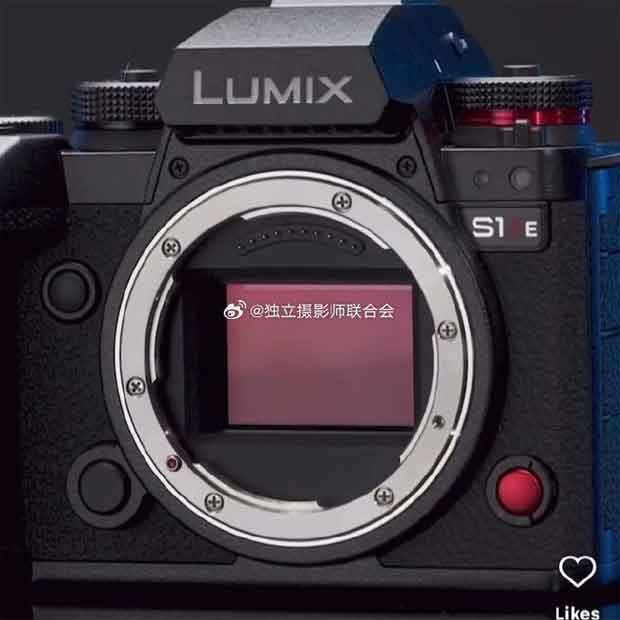
Panasonic S1 II Specifications
24MP partial stacking – Same sensor as we have seen in the Nikon Z6 Mark III
70fps – Maximum Electronic Continuous shooting speed scalable with Partially stacked CMOS sensor
No blackout – Upscaled EVF
4k120p non-cropped – All thanks to the New sensor and enhanced readout algorithm
3500€ – Not possible? since the nearest competitor – NIKON Z6 III Mirrorless Digital Camera (Body Only) ; Select Package. 24-120mm f/4 S Kit. Body ; EUR €1,839.00
Panasonic S1 IIE Specifications
24 MP Same sensor as of the Panasonic S5II S5IIx (more confirmation needed)
2,800€.
Lower video specs than the S1II
LUMIX S 24-60 F2.8
544g
999€
control button (Sony Style)
These are the initial specs coming from the rumor mill. We will post an update as soon as we have any new information.
Update on 3:45 am Friday, 9 May 2025 Greenwich Mean Time (GMT)
The S1 and S1H were technically different from each other, and at the time of announcement, the Panasonic S1H was better in video core specification
In this table, we have shown you the major difference between the Panasonic S1 and S1H cameras
And the NEXT update is about the Panasonic S1 II with Z6 III 24 MP Partially stacked CMOS sensor
|
S1 |
S1 (with DMW- SFU2 upgrade) |
S1H |
| 4K resolution options |
|
|
|
| System frequency |
- Region dependent
(non-switchable)
|
- Region dependent
(non-switchable)
|
|
| LUT-upload? |
|
|
|
| Waveforms? |
|
|
|
|
Log gamma options
(10-bit modes only) |
|
|
|
|
4K bitrate options
(up to 30p) |
- 10-bit 4:2:0
72Mbps Long GOP (HLG mode only)
|
- 10-bit 4:2:2
150Mbps Long GOP
|
- 10-bit 4:2:2
400Mbps ALL-I
150Mbps Long GOP
|
- 8-bit 4:2:0
100Mbps Long GOP
|
- 8-bit 4:2:0
100Mbps Long GOP
|
8-bit 4:2:0
100Mbps Long GOP |
|
4K bitrate options
(up to 60p) |
|
- 10-bit 4:2:2
HDMI output only
|
- 10-bit 4:2:2 (H.265)
200Mbps LongGOP
|
- 8-bit 4:2:0
150Mbps Long GOP
|
- 8-bit 4:2:0
150Mbps Long GOP
|
8-bit 4:2:0
150Mbps Long GOP |
Some more images
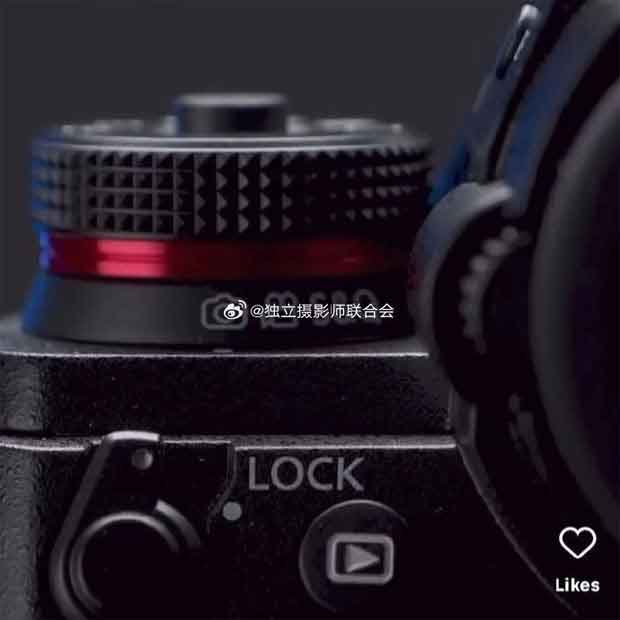

Post Update
The post was updated on 4:06 am, Saturday, 10 May 2025, Greenwich Mean Time (GMT) by thenewcamera.com team member
Follow us on our social pages FACEBOOK | TWITTER | INSTAGRAM, to get LIVE News and Panasonic Rumor
source Lrumor Image source & Credit- The Association of Independent Photographers Webio
By admin, on April 18th, 2025
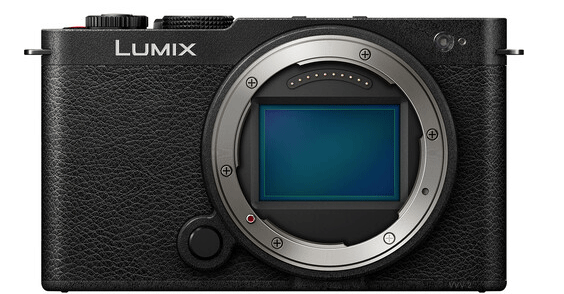
Panasonic has started distributing firmware update Ver.1.4 for the ” LUMIX S9 “. It appears to fix some bugs and be a minor update.
- Fixed a problem where some settings would revert to the default settings after updating the firmware to Ver.1.3.
- Fixed a bug in recording gain settings.
- Fixed an issue where the password authentication prompt would not appear when connecting to Wi-Fi.
Improved operational stability.
Panasonic S9 is selected as the best content creator camera by TIPA., The camera, after the V1.1 update, has become one of the best cameras for professionals.
Click here to download the update
By admin, on March 25th, 2025
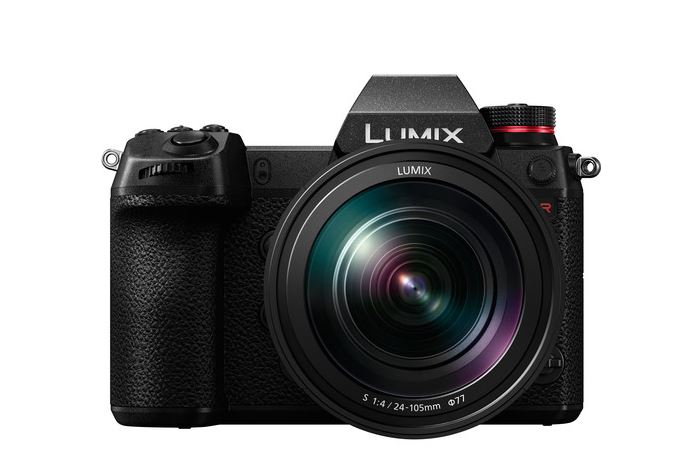
The LUMIX DC-S1R Mark II is a mirrorless camera from the LUMIX S series, announced at the end of February 2025. It is equipped with a newly developed 44MP BSI sensor and a processor that supports high-speed processing using L2 technology. It supports 40 frames per second continuous shooting and 8K 30p video recording. As an alternative to expensive stacked CMOS sensors, it has high-speed performance.
At the same time, it is significantly smaller and lighter than the previous model, and the selling price, at least in North America, is cheaper. Furthermore, it has a high-resolution EVF and a tilt + vari-angle monitor, but the body size is close to that of the S5II.
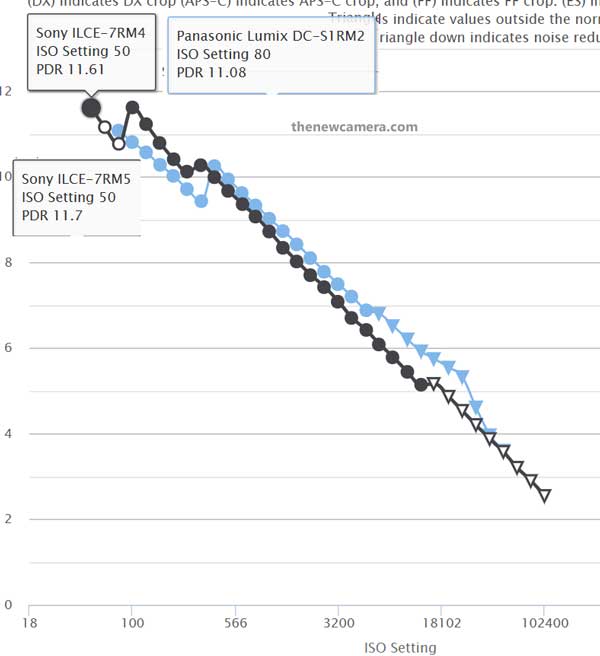
Key points of Panasonic S1R II Test Results
- According to the Photons to Photos test results, NOISE REDUCTION is applied to RAW from ISO 6400 onwards, which results in higher test scores, but caution is advised if you value detail over noise. The results are very similar to DPReview’s studio scene test.
- On the other hand, unlike the previous model, which applied noise reduction even at base ISO, it seems that the noise reduction process is not applied at low ISOs. If you are shooting stars, etc., it seems that there will be no problem if you keep the ISO up to around 5000.
- While the peak values are lower than other high-resolution sensors, the difference in performance is not surprising, and in comparison, the results are better from ISO 6400 onwards (thanks to noise reduction).
| Maximum PDR |
Low Light ISO |
Low Light EV |
| S1RII |
11.08 |
8139 |
11.35 |
| S1R |
11.37 |
4522 |
10.50 |
| α7R V |
11.70 |
5244 |
10.71 |
| α1 II |
11.61 |
5768 |
10.85 |
| α1 |
11.36 |
5215 |
10.70 |
| R5 II |
11.45 |
4846 |
10.60 |
| R5 II ES |
10.92 |
4392 |
10.46 |
| Z 7II |
11.60 |
4157 |
10.38 |
| Z9 |
11.30 |
4144 |
10.37 |
- Please note that the DC-S1R only performs better where the noise reduction is performed on the RAW data.
Lumix S1R II Rolling Shutter Exposed: The 48p Trick You Need to Know
Panasonic Camera Registrations in 2025 – Upcoming Camera Model codes
This article, “Panasonic S1R II Dynamic Range Test Results – Photons to Photos,” was first published on TheNewCamera.com.
source www.photonstophotos.net
By admin, on March 25th, 2025

One of the best budget cameras to record 6K open-gate recording, earlier or when it was announced, there was a 4K 15-minute recording limit in the camera, and for which it was criticized at the time of announcement. But Panasonic listened to us, and on October 9, 2024, they released their first firmware update, version 1.1, and they removed the recording limit. Now, it does not have any recording limit in 4K 30fps mode or even in open-gate recording as long as your memory card isn’t full or the camera doesn’t face any kind of overheating issues.
But again, practically, the overheating performance of this camera is very good, and users are quite happy with the usage of this camera. Just keep in mind the camera is using the first generation of hybrid autofocus similar to what was used with the Panasonic S5, S5II, and S5IIX, so autofocus tracking is not on par with Canon and Sony cameras.
In the latest firmware update, version 1.3, they have again tried to optimize the overall operational speed of the camera. Additionally, they fixed a problem where when connecting to a Wi-Fi network, the password was always required. Now, it has become a one-time entry, so overall connectivity performance has been improved along with the operational speed of the camera.
Dlownload the latest Update from here
Details of the update
- Feature changes due to security enhancements
– When directly connecting the camera and smartphone via Wi-Fi, the connection has been changed to always require password authentication. (The [Wi-Fi Password] menu has been removed.)
– The [TKIP] encryption method is no longer supported when connecting to Wi-Fi via an access point.
– The [No Encryption] option in network authentication is no longer supported when connecting to Wi-Fi via an access point.
– The image transfer feature to PC via Wi-Fi has been removed. (Only European/Ukrainian models)
- Other improvements
– The startup speed when powering on has been improved.
– The operational stability has been improved.
Panasonic Major camera announcement in April 2025
Lumix S1R II Rolling Shutter Exposed: The 48p Trick You Need to Know
Panasonic Camera Registrations in 2025 – Upcoming Camera Model codes
This article, “Panasonic S9 Becomes Better with Latest Firmware Update Ver.1.3,” was first published on TheNewCamera.com.
By admin, on March 18th, 2025

According to the latest rumors, Panasonic is gearing up for a major product camera announcement in April 2025. The information comes from a reliable SAR YT channel. It is expected to be a direct competitor of the Sony FX3 camera, featuring the same compact body style without an electronic viewfinder. The news is not limited to this camera—based on past registrations done by Panasonic, three more cameras are expected to arrive from Panasonic in the next few months.
Confirmed Information: What We Know So Far
- Panasonic’s next camera is coming in April 2025.
- The upcoming camera is a full-frame L-mount camera designed specifically for videographers and professional cinematographers.
- It will not include an electronic viewfinder. The design is plain and simple, similar to the Sony FX3 camera, but Panasonic also has a box-style cinema camera. I doubt whether they are preparing for their next box-style camera announcement.

Let’s Talk About Some Unconfirmed Information
- The sensor is the same as the one seen in the Nikon Z6 Mark III camera—a partially stacked 24-megapixel CMOS sensor.
- The source also mentioned that instead of a 26MP partially stacked sensor, it can also use a Sony-manufactured full-frame type CMOS sensor of 24MP resolution, providing faster readout speed to minimize rolling shutter issues.
The sensor details are unconfirmed at this moment; however, we will update this portion as soon as we get the latest information related to the same.
Lumix S1R II Rolling Shutter Exposed: The 48p Trick You Need to Know
Panasonic Camera Registrations in 2025 – Upcoming Camera Model codes
It’s Not a Panasonic S1H II Camera
It has been very clearly mentioned that the upcoming camera is not a Panasonic S1H Mark II camera. Yes, it is coming, and it is expected to arrive later this year, but the April announcement is not the S1H.
It has been explicitly mentioned that three new Panasonic cameras are coming, and they are expected to arrive soon. Some of them may even appear before summer. Just like the next camera announcement in April, based on industry insights, between April and July 2025, we will have one more fixed-lens compact camera from Panasonic. Although the exact name remains unclear, it may be a true successor to the Panasonic LX100 Mark II camera.
Now, due to a huge surge in demand, the Panasonic S1R Mark II camera, which has been announced recently, is facing shipping delays. However, even in this situation, Panasonic is ready to announce new products one after another without any delay.
Get the Panasonic S1R Mark II Camera from Adorama.com | B&H Store | Amazon.com
📢 Published on: March 18, 2025
📝 By: The New Camera Editorial Team Follow us on our social pages FACEBOOK | TWITTER | INSTAGRAM, to get LIVE News and Panasonic Rumor
This article, “Panasonic’s Major Camera Announcement in April 2025,” was first published on TheNewCamera.com.
|
KEEP THIS BLOG ALIVE - Support New Camera Buy Canon Lenses, Buy Music CD or Digital Camera at amazon it helps this site, and you do not pay anything extra, it is just a way to help support this site.

|

















